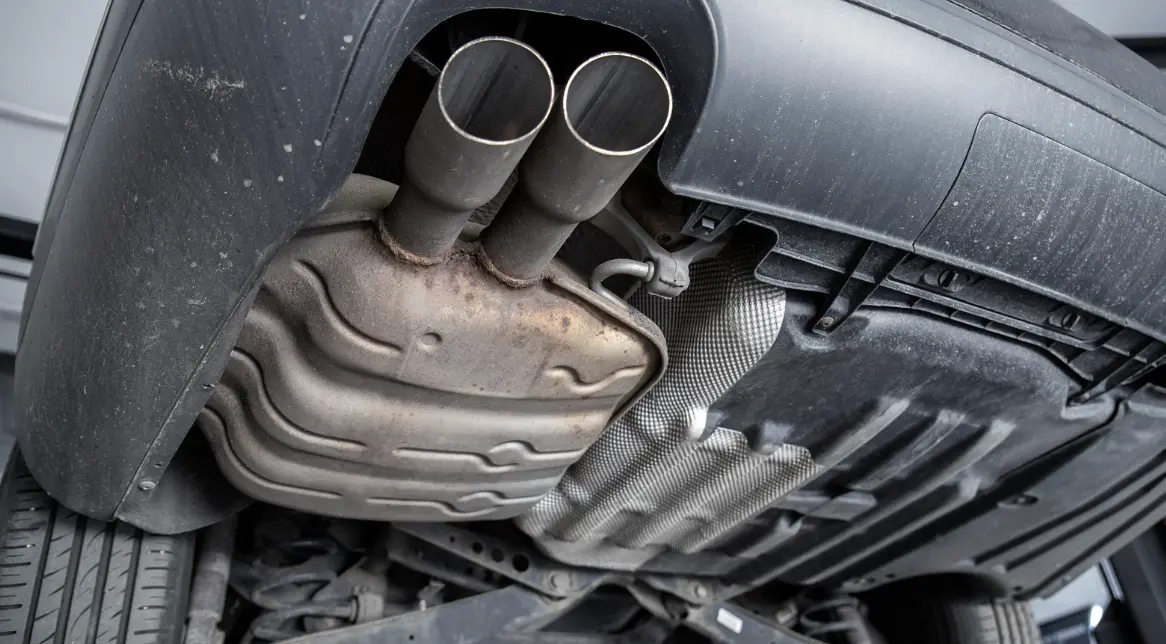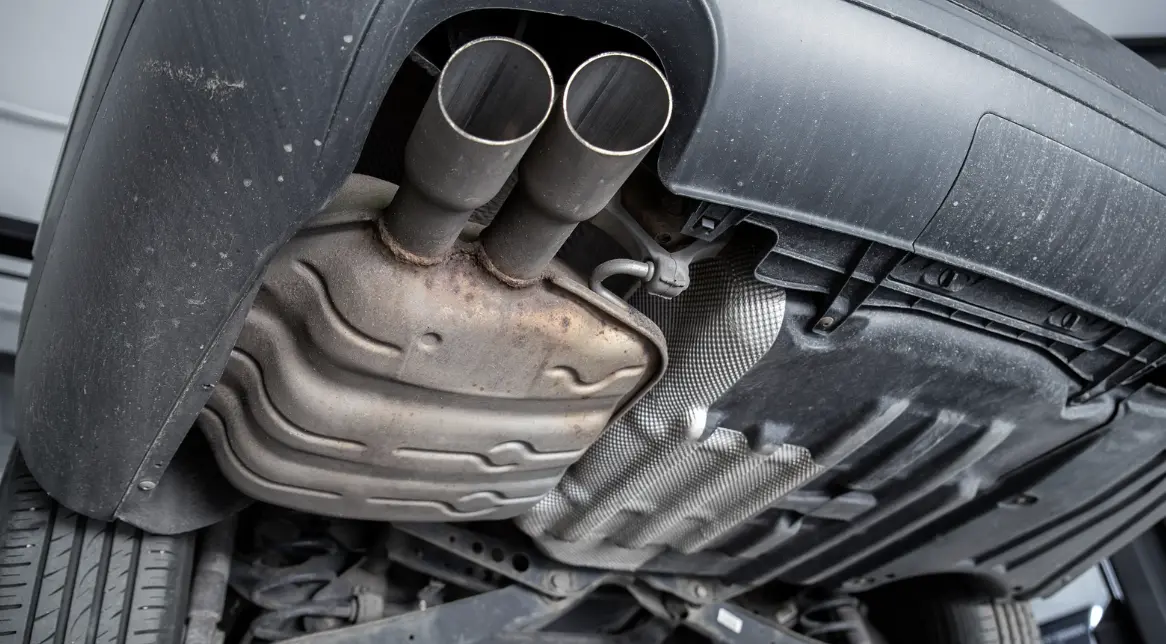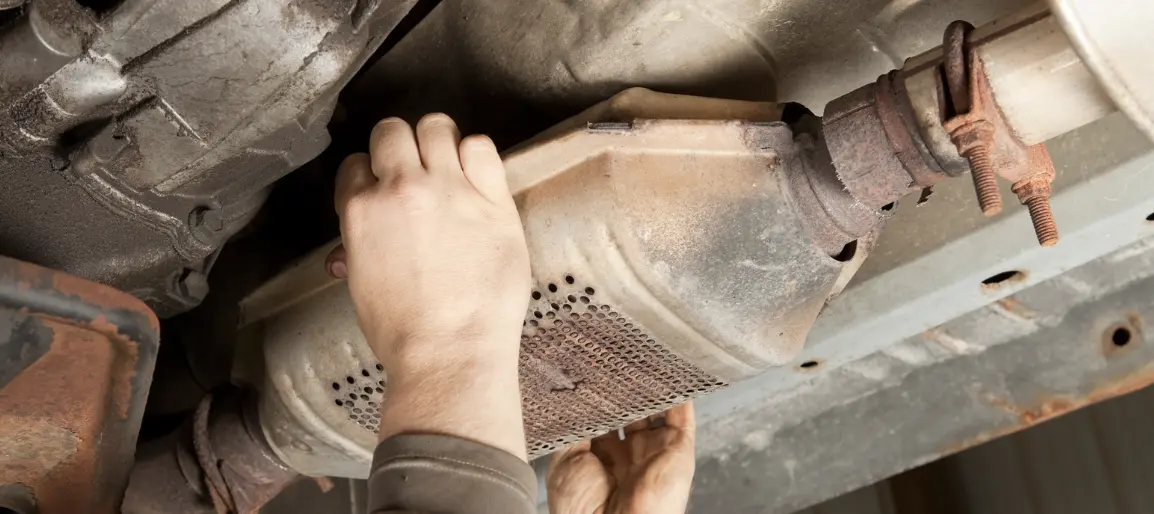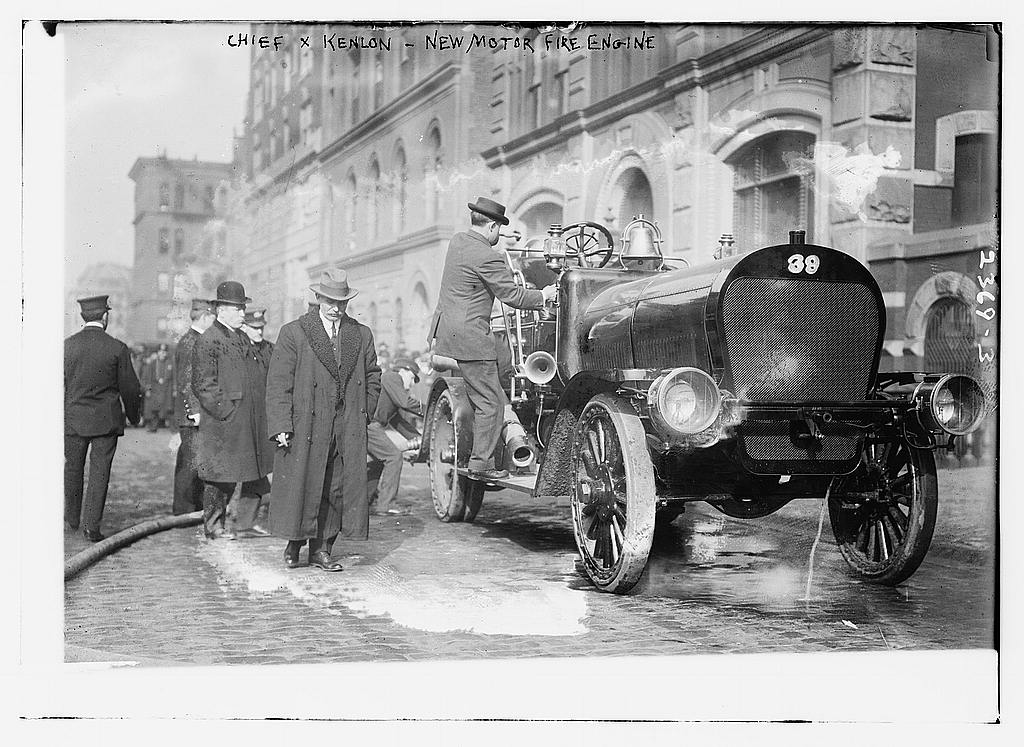If you follow the news, use neighborhood message boards like NextDoor, or simply know people who drive certain types of common vehicles, you’ve likely heard stories about catalytic converter theft. This is a crime that has been given increasing profile in cities and towns across America recently, for the simple reason that it’s a fairly easy theft to pull off with a potentially high upside. In this article we’ll break down what your catalytic converter does, why people might be inclined to steal it, and what methods exist to deter this from happening to you.
What is a Catalytic Converter?
A catalytic converter is a critical component in a vehicle’s exhaust system that plays a significant role in reducing harmful emissions produced by the internal combustion engine. It works by converting toxic gasses and pollutants in the exhaust gas into less harmful pollutants by catalyzing a redox reaction (an oxidation and a reduction reaction). This process is essential for cleaning up the exhaust gasses that result from fuel combustion before they are released into the atmosphere.

The main pollutants targeted by a catalytic converter include carbon monoxide (CO), a colorless, odorless gas that is poisonous to humans and animals; hydrocarbons (HC), which are unburned or partially burned fuel that contribute to smog and can cause health problems; and nitrogen oxides (NOx), which contribute to smog, acid rain, and can impair human health. The catalytic converter reduces these pollutants by converting carbon monoxide into carbon dioxide (CO2), hydrocarbons into CO2 and water (H2O), and nitrogen oxides back into nitrogen (N2) and oxygen (O2).
Cars have catalytic converters due to environmental concerns and regulatory mandates aimed at reducing air pollution. The widespread adoption of catalytic converters began in the 1970s when countries around the world started to implement stricter emissions regulations to combat air pollution. In the United States, for example, the Clean Air Act and the establishment of the Environmental Protection Agency (EPA) led to the requirement that all new cars be equipped with catalytic converters. Similar regulations have been adopted in other countries, making catalytic converters a standard feature on petrol-powered vehicles.
The presence of a catalytic converter is crucial for meeting emissions standards, protecting public health, and reducing the environmental impact of automobile emissions. Over the years, advances in catalytic converter technology have improved their efficiency and durability, helping vehicles to emit fewer pollutants and contributing to cleaner air.
Why Do People Steal Them?
Catalytic converter theft has, unfortunately, become increasingly common. The value of this part comes from the precious metals used inside them such as platinum, palladium, and rhodium. These metals act as catalysts to facilitate the chemical reactions that convert harmful exhaust gasses into less harmful substances. Due to their effectiveness, these metals are in high demand not only in the automotive industry but also in various industrial applications, including jewelry making and electronics. As the prices of these precious metals have risen significantly on global markets, the scrap value of a catalytic converter has also increased.
Another unfortunate aspect that makes this crime more common is that left as they are, as we’ll discuss later in the article, catalytic converters are located on the underside of vehicles and can often be removed relatively quickly and with minimal tools, especially on higher ground-clearance vehicles such as SUVs and trucks.

When it comes down to it, compared to other criminals, catalytic converter thieves can be harder to catch. Catalytic converters are not typically marked with serial numbers or identifying features that can be easily traced, making it difficult for law enforcement to connect stolen parts to specific thefts or to return recovered converters to their rightful owners. Unless the area where the car is parked is surveiled or otherwise protected, it can be hard to trace the criminals who commit the theft.
The demand for replacement catalytic converters contributes to the theft problem. Vehicles cannot legally operate without them due to emission control regulations, creating a constant demand for these components both in the new and used parts markets. This demand leads criminals to believe they may have an easy time selling their stolen goods, either as whole units or for the value of the precious metals they contain. Because they aren’t traceable, it’s possible for even the most scrupulous buyer to be tricked into purchasing a stolen catalytic converter, although requesting some kind of verification that the seller came by the part legally could be a step toward prevention.
What to Do If Yours is Stolen

If your catalytic converter gets stolen, the first step is to report the theft to the police. Providing them with any details of the incident, including the time frame of the theft and any possible surveillance footage, can help in the investigation and may aid in recovering the stolen property. It’s also important to contact your insurance company to report the theft, as your policy may cover the replacement of the catalytic converter.
After reporting the theft, the next step is to assess the vehicle’s condition. While a car can technically be driven without a catalytic converter, doing so is not advisable for several reasons. First, the vehicle will produce higher levels of harmful emissions, contributing to pollution and potentially harming the environment and public health. Second, the absence of a catalytic converter can affect the car’s performance, including possible changes in engine performance and fuel efficiency. Third, driving without a catalytic converter is illegal in many places due to emission control laws, and doing so could result in fines or other penalties.
The removal of the catalytic converter can sometimes cause damage to other parts of the exhaust system, which might need inspection and repair. It’s essential to take the vehicle to a qualified mechanic or repair shop to assess any damage and discuss the options for replacing the catalytic converter. They can provide advice on the best course of action and ensure that any replacement meets the legal emissions requirements for your area.
While a car can technically operate without a catalytic converter, it’s not safe or legal to do so in many jurisdictions. Taking immediate steps to report the theft and seeking professional advice for repair and replacement are crucial actions to take following such an incident.
How to Prevent Catalytic Converter Theft
Car owners can take several measures to reduce the risk of having their catalytic converters stolen. Enhancing the visibility and security around where the car is parked can be a significant deterrent. Parking in well-lit areas, close to building entrances or near security cameras, can make a vehicle a less appealing target for thieves. For those with a garage, keeping the vehicle parked inside with the door locked is one of the best ways to protect against theft.

Increasing the effort required to steal the catalytic converter can also dissuade thieves. Installing a catalytic converter anti-theft device is an effective measure. These devices can range from steel cages that encase the converter, making it more difficult to remove without considerable effort, to cables that secure the converter to the vehicle’s frame. Some owners opt for engraving the vehicle identification number (VIN) on the catalytic converter, which doesn’t prevent theft but can aid in tracking and prosecuting thieves, as well as potentially recovering the stolen item.
One brand, Cat Security, sells a line of metal shields designed to protect catalytic converters on multiple types of vehicles. Part of what makes these shields effective is their construction. The parts are made of a blend of metals, meaning thieves would need to be equipped with multiple special tools in order to cut through the device. This transforms catalytic converter theft from a crime of convenience to a labor-intensive affair, thereby dissuading most thieves from even trying.
Another strategy involves adjusting the car’s alarm system to be more sensitive to vibration, which could alert owners and bystanders to theft attempts. Additionally, there are aftermarket products specifically designed to trigger an alarm if the catalytic converter is tampered with.

Awareness and community vigilance can also play a crucial role. Neighbors looking out for each other and reporting suspicious activities can deter thieves. Joining or forming community watch programs can enhance this effect.
While it’s challenging to make a vehicle completely theft-proof, combining several of these strategies can significantly reduce the risk of catalytic converter theft by making it more difficult, time-consuming, and risky for thieves.





